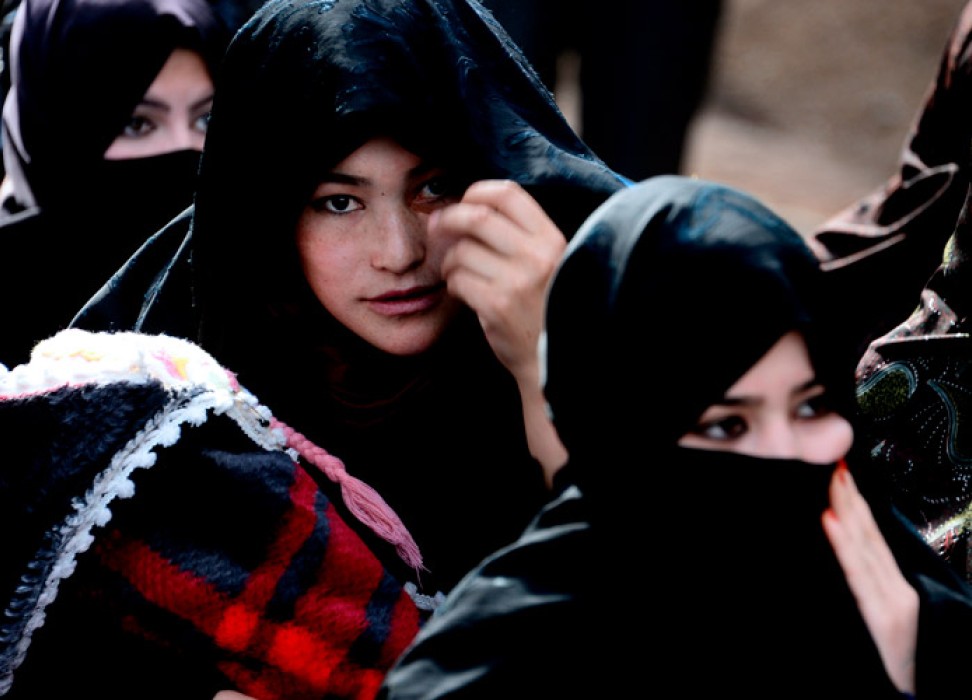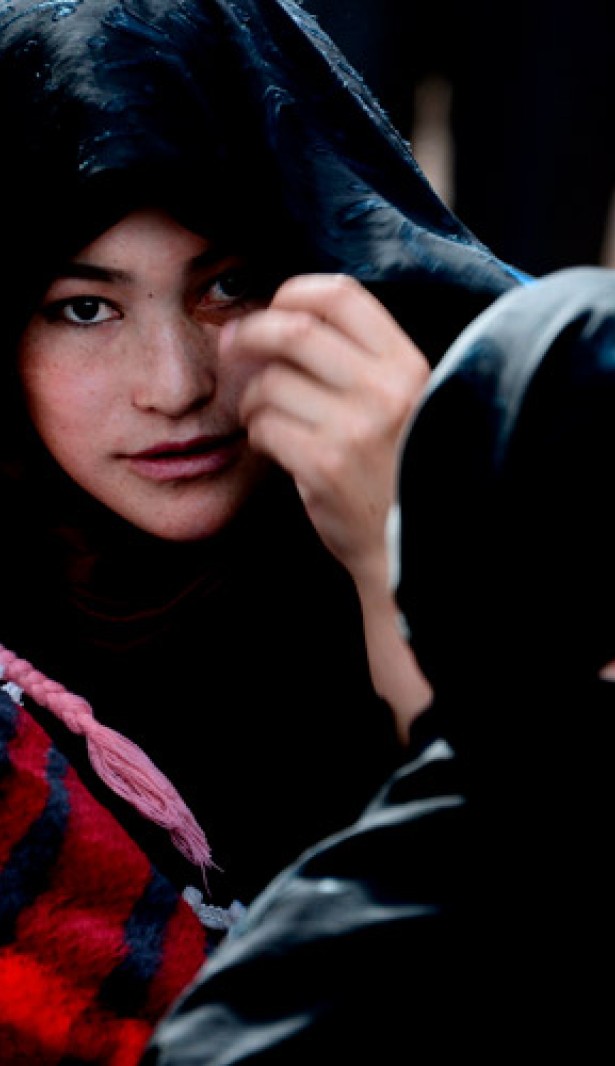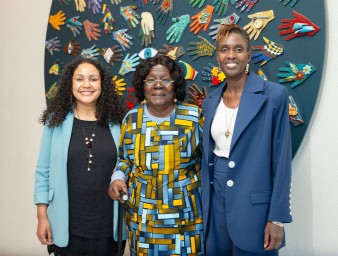An entire life sentenced to death
10 October 2018

Noura Hussein was only 16 years old when her cousin, who was twice her age at the time, proposed to her. The young Sudanese girl did not want to get married and wanted to continue her education, but her father feared that she would suffer a similar fate to many of the girls in their region who had gotten pregnant and given birth out of wedlock—which is seen as unacceptable and condemns these girls to a life of marginalizaton.
After her imposed engagement ceremony, Hussein ran away and sought refuge at her aunt’s where she remained for three years before she was persuaded to return home. Her family told her that the marriage would not be completed. However, she soon realised her family tricked her, and she was forced to marry.
Hussein moved in with her husband but rejected his sexual advances. With the help of his cousins, Hussein’s husband pinned her down and raped her. The next day he tried again, but Hussein defended herself and killed her husband with a knife during the struggle. When Hussein ran to her family for help, her father turned her over to the police, her family disowned her, and a court sentenced her to death in May 2018.
A number of celebrities backed an online campaign, #JusticeforNoura, to demand Hussein’s release. In June 2018, an appeals court overturned the death sentence, and Hussein was instead sentenced to five years in prison for her husband’s murder.
A study published in September 2018 by the Cornell Center on the Death Penalty Worldwide, entitled “Judged for More than Her Crime,” points out that the majority of women sentenced to capital punishment are sentenced for the crime of murder. A large number of those crimes involve the killing of a family member or an intimate partner in the context of domestic violence.
Delphine Lourtau, one of the researchers who conducted that study, says that criminal law is ill suited to respond to situations of gender-based violence. The existing laws require to meet a stringent list of requirements under which circumstances murder can be considered as self-defence; one of these requirements is the imminent and the grievous nature of the harm.
“Women in situations of long-term abuse don’t fit this pattern, which is designed for different kinds of encounters that involve explosive, sudden violence,” she says. “Women who are in long-term abusive relationships often find themselves in a different type of power dynamic in which the violence is constant and takes different forms, not just physical.”
Gender-based violence not a mitigating factor
In a 2017 report to the Human Rights Council, the UN Special Rapporteur on extrajudicial, summary or arbitrary executions, Agnes Callamard, pointed out that imposing a death sentence amounts to an arbitrary killing when courts ignore essential facts of a defendant’s case such as a long history of domestic violence, including because of larger social patterns of gender inequality. Women facing capital prosecution arising out of domestic abuse, she explained, suffer from gender-based oppression on multiple levels. Callamard added that it is exceedingly rare for domestic abuse to be treated as a mitigating factor during capital sentencing proceedings.
Lourtau indicates that the vast majority of people who are given death sentences globally are poor and their economic vulnerability has a direct relationship with the quality of legal representation they receive.
“Although most countries provide lawyers to indigent capital defendants these lawyers often don’t have the experience, the training or the resources necessary to mount a proper defence,” she says. “And we know that being well represented at trial is the single most determinative factor for the outcome of that trial,” Lourtau says.
The second most common category of crimes women are sentenced to death is non-violent drug offences, especially in Asia and the Middle East. Women often become so-called “drug mules” because they are in situations of extreme economic vulnerability.
“This has a massive impact on women’s ability to access justice because oftentimes they are sentenced in a mandatory death penalty scheme,” Sharon Pia Hickey, who co-authored the Cornell Center study explains. “Under international law, a non-violent drug offence should not attract the death penalty and [drug mules] are sentenced without real consideration of the mitigating factors that should result in leniency.”
The study also indicates that women are sentenced to capital punishment for religious violations such as apostasy, blasphemy, or witchcraft; for crimes against “morality” such as adultery or sexual relationships outside of marriage; and, in some rare cases, for kidnapping and armed robbery.
In some countries, women receive harsher sentences then men for crimes against “morality.” Further, evidentiary requirements for women are at times different compared to men - to the disadvantage of women; those differences are forms of gender-based discrimination.
Across legal systems, countries and cultures, the general risk factors that lead women to conflict with the law and eventually on death row have been identified by Cornell Center as early and forced marriage, poverty, migrant worker status, intellectual disability or mental health issues, race or ethnic minority status.
According to Callamard, we only see the last iteration of these types of discrimination against women in their capital conviction; before they reach sentencing, they have already experienced crosscutting forms of discrimination throughout their lives.
Neglected issue
There are at least 500 women currently under sentence of death across the globe however, accurate figures on the application of the death penalty are difficult to obtain. This represents around five per cent of the world’s death row population - with that proportion rising to 13 per cent in Jordan and 18 per cent in Thailand – and less than five per cent of the world’s executions.
These minority percentages beg the question: why should women be given particular attention? For Hickey, these numbers do not provide an account of women’s lives.
“The stories and the crimes for which women have been sentenced and the conditions on death row have not been looked at. We are finding out that gender-based violence is not taken into account during their sentencing and in their trials: it is not heard. This extends to women in general who are facing lengthy sentences for similar crimes,” Hickey says.
She also points out that very few women are executed but are living in conditions that are designed neither for women nor for women who will spend the rest of their lives on death row.
Hickey and Lourtau launched their study on the sidelines of the UN Human Rights Council in Geneva. They feel it was positively received and that there is a general sense that the issue of women on death row has been neglected too long. They hope their findings will help develop new legal frameworks and advocacy initiatives nationally and internationally that will recognise past injustices and prevent them in the future, as well as acknowledge women as a specific category of rights holders in national court systems and under international law.
For Hickey, exemptions to the application of the death penalty centre around women’s roles as caregivers and mothers. This view does not get to the complexity of women as human beings, she says, and it shows that for women who have transgressed gender norms - specifically those who have committed crimes against children, for instance - are seen as less deserving of the full appreciation and investigation into their entire lives to find mitigating circumstances.
Offenders or victims?
The Cornell Centre study reveals that men are judged for the violence and the gravity of their crimes whereas women are judged for the context in which they commit those crimes and whether or not they were “good women” at the time of the offences.
“One of the difficulties that even the human rights community has faced, and one of the reasons why women on death row have been neglected for so long, is that it is very difficult for us to see women both as victims and offenders,” Lourtau says.
“There is this dichotomy that women are either victims and good women, or offenders and bad women,” she adds. “Women come in contact with the criminal justice system having disproportionately suffered from abuse and trauma in their lives. These factors should be taken into consideration and, we argue, should preclude death sentences in cases where women have suffered gender-based violence.”
Some 170 States have either abolished the death penalty or put a moratorium on its use. Many countries that have not abolished the death penalty but have instituted a moratorium on executions have not carried out killings, in particular of women on death row, in decades. For example, Thailand has not executed a woman since 1942. In Mongolia, women were excluded from the death penalty until its total abolition in 2017. Women exemption was considered a significant step toward abolition.
“The death penalty is unlike any other penalty in that it expresses the fundamental nature of the State’s power over its citizens. It changes the relationship between a State and its citizens when a State gives itself the power to take away life. As a result, the death penalty has a political symbolism which goes far beyond any individual capital offence,” Lourtau says.
“That is why we have seen that the death penalty tends to resurge and executions rise in number in periods of political tension and conflict, while the death penalty tends to be abolished, on the contrary, when the State is renewing itself, typically when the Constitution is being rewritten, or when there is a regime change accompanied by major institutional changes,” she adds. “Now is a time when many States’ perceived need to retain the death penalty in their arsenal is higher than ever because of the international context of terrorism.”
“From the perspective of human rights, we have never encountered a case where the death penalty was applied without there being a violation of at least one fundamental right. Human rights and the death penalty are fundamentally incompatible,” Lourtau says.10 October 2018




